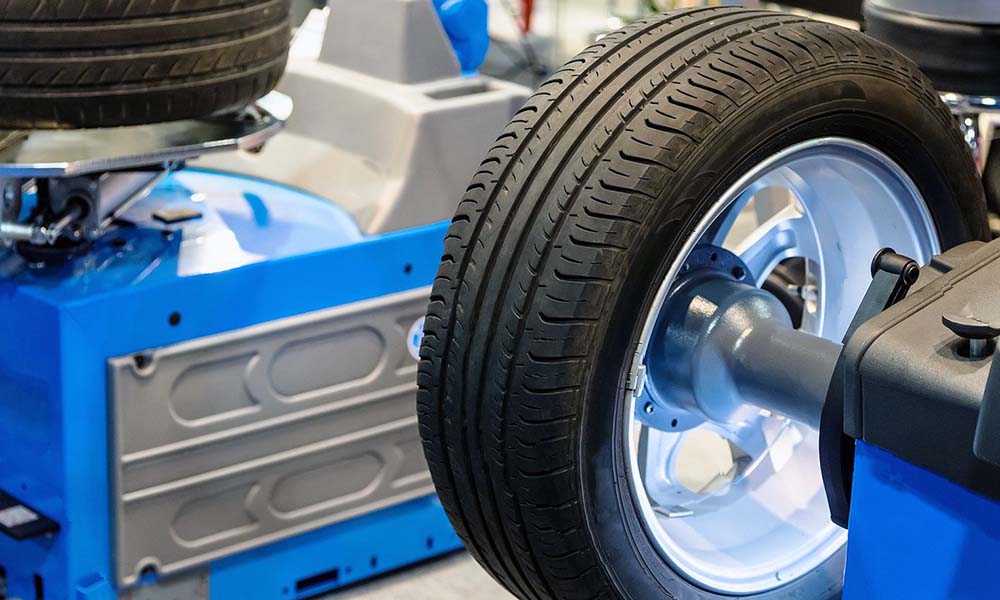
Wheel balancing: definition, types, procedure and common mistakes
Content
- What is wheel balancing
- What does wheel balancing affect and what are the consequences of its absence
- Wheel imbalance
- How to check wheel balance
- How to carry out the procedure correctly
- What equipment is needed for the procedure
- Common Balancing Mistakes
- Is it necessary to balance the rear wheels on the front wheel drive?
- What determines the frequency of balancing
Balancing the wheels of the car affects the handling of the car: the contact patch is constantly changing, the grip becomes worse. On a wet or slippery road at high speed, the situation can get out of hand. It turns out that wheel balancing is a safety issue for the car crew.
Comfortable and safe driving a car largely depends on the condition of the tires. Drivers are familiar with the concept of wheel balancing. However, many do not attach due importance to the procedure. And, accordingly, they do not understand the consequences of tire imbalance.
What is wheel balancing
The wheelbase is an important part of the car. The slopes are the first to take on the blows from stones, bumps and holes from the road, "tolerate" the work of the suspension. To withstand all the loads, automotive "shoes" must be solid.
The technical characteristics of good tires do not end with an excellent compound, high-quality discs, and stable pressure. Car mechanics at service stations and home craftsmen change seasonal tires, identify pockets and the degree of tire wear, misalignment, and other problems.
What does wheel balancing affect and what are the consequences of its absence
Unbalanced wheels create vibration in the car: shaking, beating and noise appear. If we do not take into account the discomfort of the driver and passengers from such a trip, then the destruction of components and assemblies cannot be ignored: accelerated uneven (spotted) wear of tire treads, disk deformation.
Ball bearings, hubs are also destroyed, shock absorber struts, bearings fail. The imbalance of the wheels leads to a lengthening of the braking distance, violates the steering.

Wheel imbalance interferes with steering
Balancing the wheels of the car affects the handling of the car: the contact patch is constantly changing, the grip becomes worse. On a wet or slippery road at high speed, the situation can get out of hand. It turns out that wheel balancing is a safety issue for the car crew.
Wheel imbalance
The wheel is a rotating object. All points of its surface are equally removed from the center - the axis of rotation, and the weight should be the same around the entire circumference.
Definition
The uneven distribution of rotating masses relative to the center of rotation is called wheel imbalance. In other words, the tire becomes lighter in certain places.

Balance weights
Wheel balancing is carried out by hanging special compensating weights to weight the lighter parts of the tires.
Types
There are two types of imbalance:
- Dynamic - when the violation of the mass occurs in the horizontal plane, that is, the inertia force crosses the axis of rotation: the wheel writes out the "eight".
- Static - the mass is broken relative to the vertical axis: the tire bounces up and down (vertical vibration).

Types of wheel imbalance
Dynamic wheel balancing is carried out only on professional stands on the outside and inside. Static - can be done in garage conditions: the procedure is to hang additional weights in light areas. However, often a combination of both types of imbalance is observed on the wheels of one car: then it is more reliable to entrust the matter to tire service specialists.
How to check wheel balance
The problem makes itself felt at a car speed of 80-90 km / h by beating in the steering wheel, shaking. You can independently check the balance of tires, timing the procedure for the summer or winter replacement of rubber sets. Mount a new wheel, ride for a couple of days so that the tire gets rid of deformation after storage.
Next steps:
- Jack up the car on the side where you will be checking.
- Spin the ramp, wait for it to stop.
- Mark the top point on the rubber with chalk.
- Unwind in different directions, marking the top.
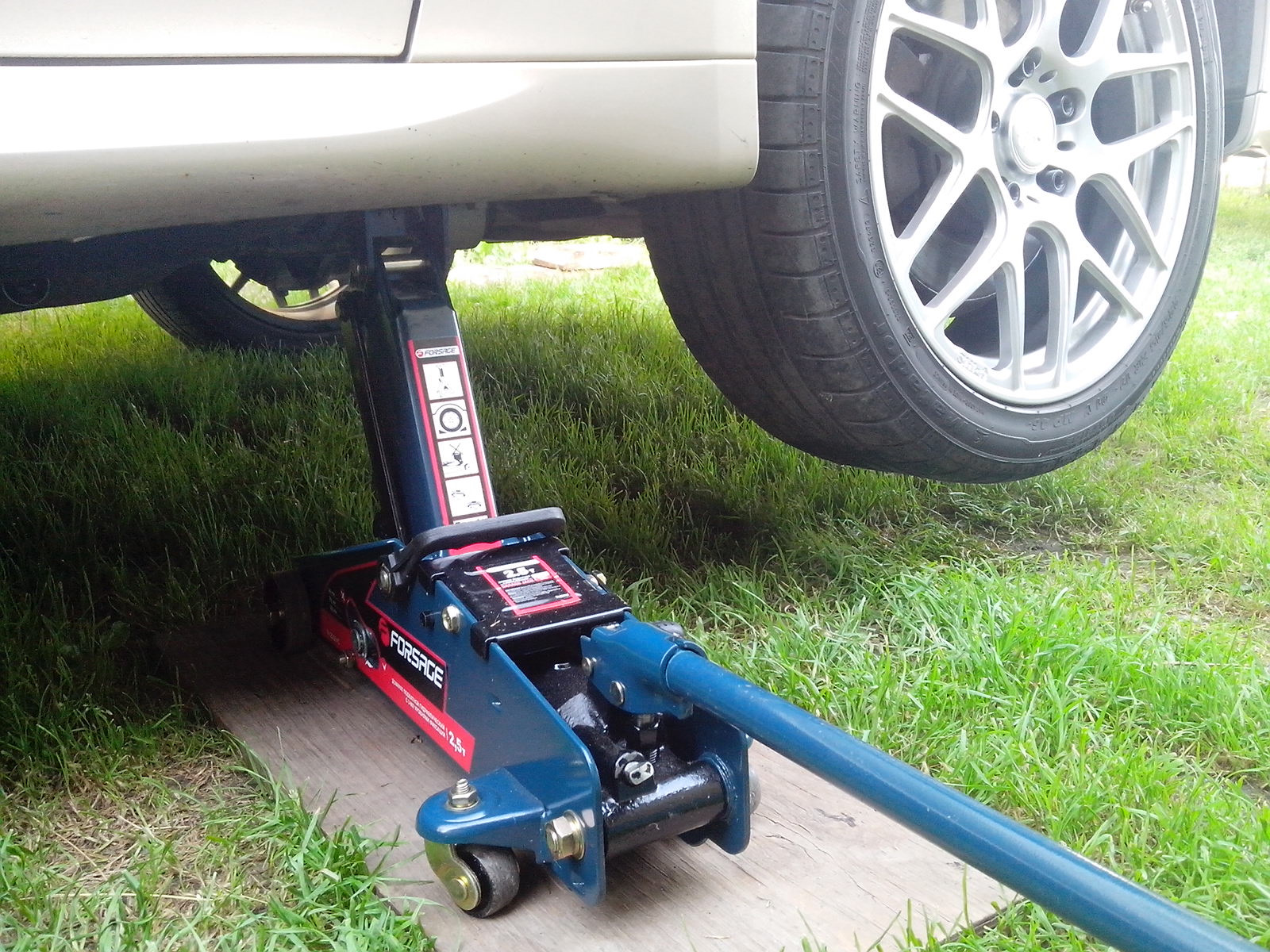
How to check wheel balance
How to carry out the procedure correctly
With an imbalance of 10-15 g, the suspension receives thousands of blows per minute, which is comparable to the action of a jackhammer on concrete. Proper tire balancing is essential to prevent the negative consequences of a tire weight imbalance.
Why is the preparatory stage important and what does it include
You need to balance the wheels as an assembly when the tire is put on the rim. A mandatory rule is the preparatory stage, on which the final result of the procedure depends.
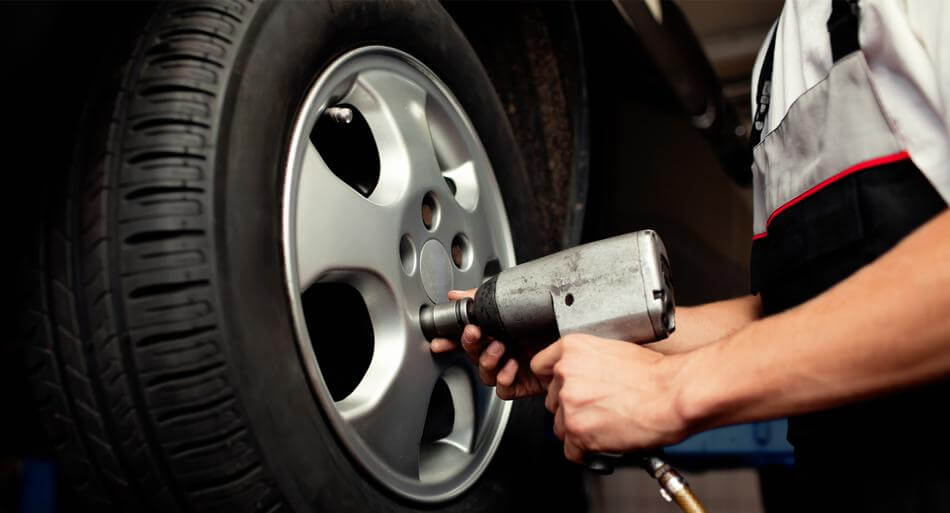
Preparatory stage
Do the following:
- Wash the rim from both sides, otherwise the pieces of dirt will show an uneven weight of rubber around the circumference.
- Clean the tread from stuck stones (especially important for trucks and SUVs). Stones and gravel between the blocks of the treadmill tires make certain sections heavier: balancing will be inaccurate.
- Remove old weights and trim caps from rims.
Balancing types
The procedure is carried out in several ways. There is balancing of car wheels on the machine with the removal of tires and directly on the car. There is also an automatic balancing with granules or powder.
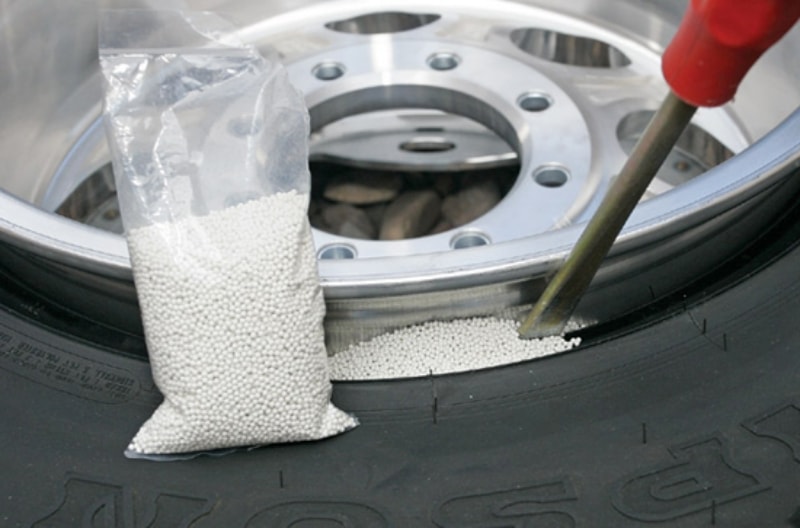
Wheel balancing granules
Granules with a diameter of 0,15-0,9 mm have a heavy glass or ceramic core inside, the elements are coated with silicone on the outside.
Static
Static (vertical) imbalance is eliminated by all tire stations. But this is the simplest type of balancing, which, in order to save money and time, motorists often perform in the garage.
The essence of the operation is to identify a heavy section of the tire, which hits the road with more force, unevenly abrading the tread and destructively responding to the chassis and suspension.
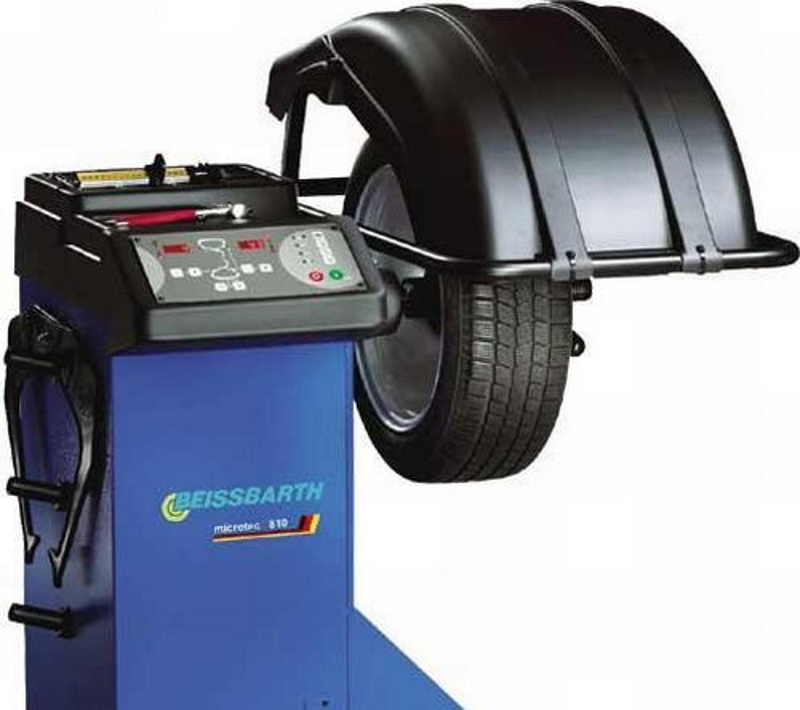
Static balancing
To eliminate static imbalance, compensating weights are hung on light points over the side flanges. The weight of products is from 5 to 60 grams, the material is lead, steel, zinc.
On stamped discs, repair devices are attached with brackets, on cast and forged discs - with Velcro. The latter are unreliable in winter: they can fall off in the cold. But there are a number of discs on which there is no other way of securing goods.
Dynamic
The larger the tread in the cross member, the easier it is to “earn” a dynamic imbalance when driving (“eight”) and the harder it is to get rid of it. It is impossible to eliminate the intersection of the axes of inertia and rotation on your own - the matter is entrusted to professionals. The air pressure in the tires for any type of balancing should be normal.
Finish
Such wheel balancing should be done after the elimination of static and dynamic imbalance, as well as when changing tires.

Finish balancing
The final tire balancing procedure is carried out directly on the car: an electronic device is installed under the bottom, the wheels are spun up to 80-90 km / h. Sensors automatically take measurements, indicate the places where weights need to be added to the rim.
Ways to balance without removing the wheels
When there is a vertical vibration of the body from wheel bounces, drivers eliminate it in the garage. The process is the same as at the service station, but you will spend more time, because you will have to try on weights of different weights several times. The old-fashioned way, "by eye", gives the same effect as in the workshop.
Do not miss the preparatory stage with washing the discs and cleaning the tread from stones and gravel. Remove the plastic pads.
Further work:
- Raise one side of the car on a jack, insure against rolling back and falling.
- Determine the installation location of the balancing weights: unwind the slope in one direction, after stopping, mark the top point on it with chalk, focusing, for example, on the middle of the wheel arch.
- Spin the tire in the other direction, repeat the manipulation with chalk.
- Evaluate the placement of chalk marks: the middle between them is the desired light point.
- Install the weights in this place, starting with the light ones.
- Keep spinning the wheel. If, after stopping, the weights are at the bottom, the balancing is successful.
- Now start spreading the weights in different directions. The task is to ensure that after the next spins and stops, the weights are in different positions.
- Secure items with a hammer.
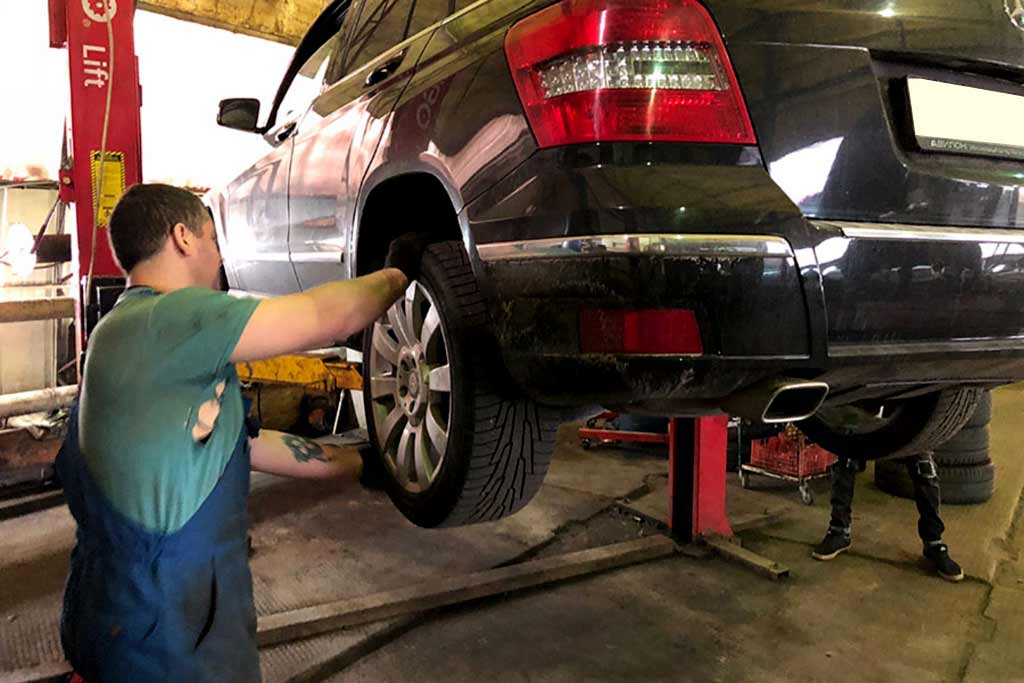
Ways to balance without removing the wheels
What equipment is needed for the procedure
Already during manufacture, the mass of tires is unevenly distributed around the axis of rotation - this is the so-called technological error. Further, during operation, the imbalance increases: the tire accounts for up to 75% of the imbalance, for the disks - up to 20%. The remaining percentages fall on the hubs with brake drums.
To get rid of the imbalance, there is professional equipment - balancing machines (BS). Structures for diagnostics and adjustment of rotating objects are permanently installed in the premises of tire shops.
BS for wide-profile and ordinary tires are calibrated for installation without removing the wheels with mechanical, electronic and combined measuring instruments. Another group of equipment is represented by stands that work with removed ramps.
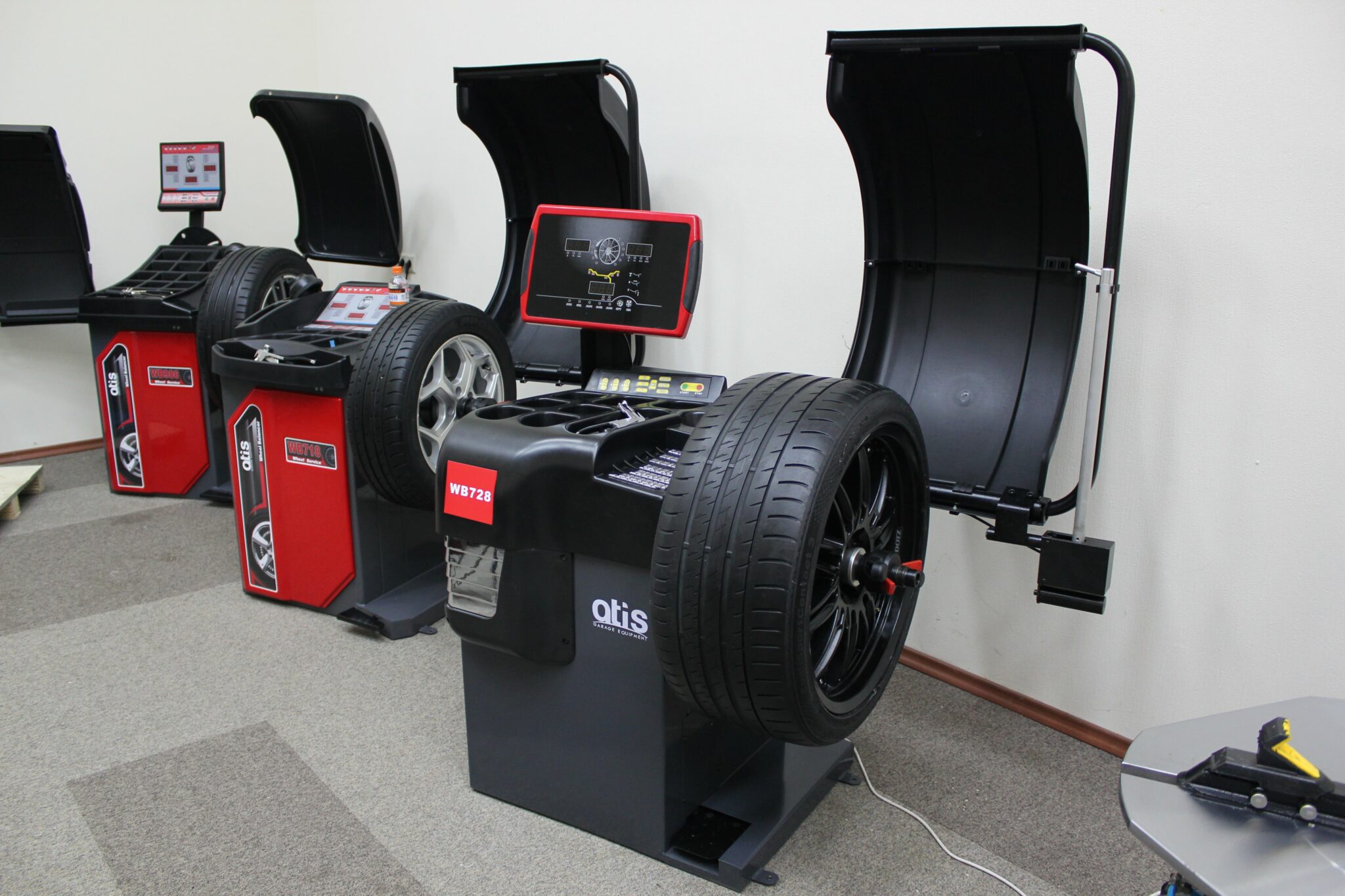
Balancing machine
The main elements of a high-precision bench for balancing the wheels of passenger cars are a shaft with an electric (up to 800 rpm) or manual (up to 250 rpm) drive and a computer for data processing.
The technical process looks like this: the wheel is strung and securely fixed on the shaft, the computing system reads the initial information (width and height of the rubber profile, disk size). The shaft is spun, then the drive is stopped, allowing the wheel to rotate by inertia.
Next, impulse, dynamic and piezoelectric sensors are turned on, new data are recorded, according to which the embedded program calculates the light points of the tire. It remains for the master to mount the weighting agents.
Common Balancing Mistakes
Typical mistakes when they violate the technology of equalizing the mass of the wheel relative to the axis of rotation:
- There was no preparatory stage at all or it was carried out carelessly: as a result, adhering lumps of dirt show excessive weight of the wheel where everything is in order.
- The old weights were not removed from the rim: in contrast to them, new weights are installed, which leads to worse imbalance;
- They did not pay attention to the fit of the rubber on the rim: when the pressure in the tire is raised, it sits in place, the balance disappears.
- The wheel is not centered on the balancer shaft. A taper adapter is usually used for the center hole, flange or screw clamps are used for mounting holes. For truck wheels, Gazelles, spacers and large cones may be required.

Wheel balancing errors
Is it necessary to balance the rear wheels on the front wheel drive?
On front-wheel drive vehicles, the drive wheels suffer more because they are involved in turns. Countless maneuvers eat up the sidewalls of the tread. But the rear slopes are also subject to mechanical deformations. If the front wheel flies into the hole, then the rear will fall into the same place, striking the suspension.
The imbalance in the front is more pronounced, while the rear appears at speeds over 120 km / h. But balancing must be carried out simultaneously on all wheels, regardless of the installation location.
What determines the frequency of balancing
There are no specific requirements for the frequency of the procedure - it all depends on the operation. If you have driven 15 thousand km in a season at a moderate pace, be sure to check the balance of the ramps. Extreme driving style reduces the time of diagnosis and adjustment by half.
Other reasons why you need to balance your wheels often:
- the car fell into deep potholes on the road or the wheel hit the curbs, other obstacles;
- you often slow down by skidding;
- when you bought new wheels and tires: after assembling the wheel, balance it;
- at the time of seasonal “changing shoes”, it would be useful to check the balance: reputable car services do this for free;
- before a trip over 1500 km and immediately after a long trip;
- after installing new disks;
- wheel repair, tire dismantling - an occasion to carry out the balancing procedure.
Conclusion: the calmer and more attentive the motorist, the less often he balances the wheels.
